





This summer made headlines for all the wrong reasons. The alarming acceleration of heating, both on land and in the oceans, has taken even the climate experts by surprise. At the time of writing, we in the UK have escaped the terrifying heat that has plagued much of Europe, and I’m grateful for a season on the farm that has allowed us to refill the barns with fodder for the winter ahead.
It seems we need to be prepared for ongoing weather roller coasters. Weather patterns are changing fast, and one feature is that high and low pressure systems get stuck: it’s either very dry or very wet. Building resilience and adaptability is crucial, and farmers need plenty of help to manage these challenges, to shift their practices, and our teams are doing all they can to provide that.
We’re almost at the end of Organic September – a time to raise awareness of the incredible benefits organic farming can bring to climate, nature and our health. This year, our work focusses on the harmful impact of nitrogen from synthetic fertilisers on our land, water and air, and the contribution of these fertilisers to climate change. Find out how you can get involved on page 8
This year, we’re also delighted to be celebrating 50 years of organic certification at the Soil Association. Half a century on and both the Soil Association symbol and the organic standards continue to provide rigour and reassurance, earning the trust of consumers through five decades of uncompromising and transparent evolution.
To commemorate this anniversary, we’ve included a retro Soil Association poster from our archives on page 18 which you might like to keep as a souvenir from our early years.
And on page 12, we hear from Joanna Wright at organic flower farm, Organic Blooms, about how she’s brought community onto her farm, providing the access to nature and beauty which most of us crave.

I hope you enjoy this issue of Living Earth. As ever, please do get in touch with us with any comments or queries – we love hearing from you.
Helen Browning CEO and organic farmerCelebrating
Horticulture
Notes from the farm
Sally’s favourite field
Meet the team
The
ShareGift
Here at Soil HQ, we’re so grateful to have the support of our generous members. Together, we’re able to continue transforming the food and farming landscape, making the planet a better place for wildlife and ourselves.
A whopping 14,000 people have signed our petition and 2,000 have written to their MP demanding the government stop endorsing junk food.
Thanks to you, the Scientific Advisory Committee on Nutrition (SACN) is reviewing the evidence on the effect of processed foods on health and a number of questions surrounding ultra-processed foods have been raised in Parliament.

We’d like to say a big thank you to everyone who donated to our February appeal to help create a better life for pigs. The appeal raised a fantastic £37,000!
Thanks to you, we can continue our work to improve the welfare of animals on farms and provide the essential advice and support that farmers need to move away from intensive pig farming.
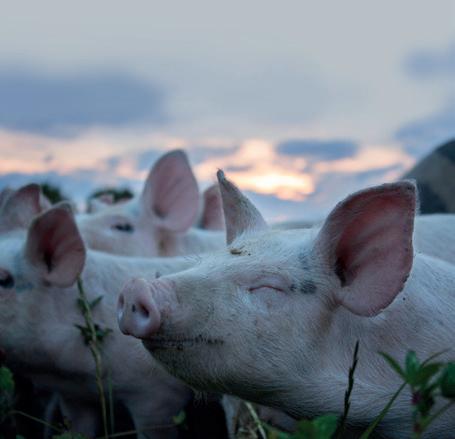
A huge thank you to everyone who joined us for Plant and Share 2023, our programme bringing communities together to grow and share food. It was our most exciting and successful year to date!
This spring, a massive 46,694 people attended 1,494 Plant and Share events across the country. Not only did participants get closer to nature and grow together, but communities also enjoyed the opportunity to get together, share knowledge and develop skills. A big thank you to all involved!

Susan, Duchess of Richmond, passed away at her home at Goodwood on the 13th of June, at the age of ninety.
A trailblazer of Britain’s organic movement, and one of the Soil Association’s earliest members, the Duchess of Richmond was responsible for Goodwood Home Farm’s organic transformation. Goodwood Farm was the first dairy in the country with 100% organically fed cows and is the largest lowland organic farm in the UK.
Susan Richmond embodied the mission and values of the Soil Association to the highest degree, working towards a better future starting with the health of our soil. She leaves behind an inspiring legacy, having championed the health of animals, nature, and people throughout her life.
27th Sept 7pm Online
Our AGM this year will be online again to allow as many people as possible to attend. It will be held on Wednesday 27th September from 7pm to 8:30pm. Please register for this event by calling 0300 330 0022, email us at memb@soilassociation.org or register online: soilassociation.co/agm
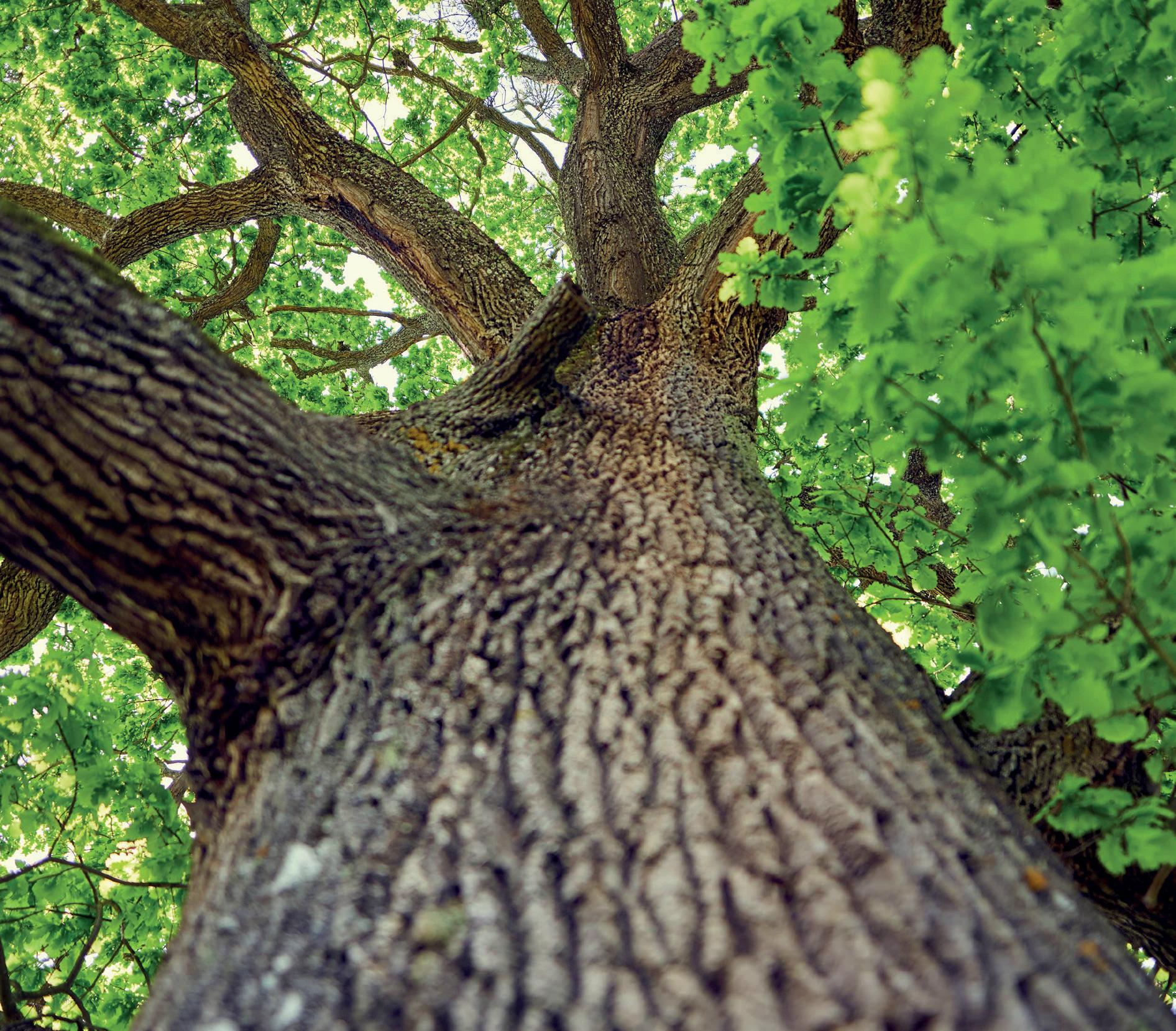

The term ‘local’, as it is now, excludes so many people, including minority ethnic groups, from the sustainable food conversation.

Plant and Share Month is a campaign to get the nation growing and sharing produce with their community, whether that’s at school, on an allotment, in your garden or on your windowsill. It’s run by Food for Life Get Togethers, a Soil Association programme that aims to build connections through growing.
I want to stay connected to my culture and traditions whilst still eating locally sourced food, but that isn’t possible in the UK at the moment. The term ‘local’, as it is now, excludes so many people, including minority ethnic groups, from the sustainable food conversation.”
After learning about the Get Togethers programme in 2022, Carol formed Back to Our Roots to encompass not only her own heritage, but also the heritage, familiar foods and culture of her community.
This year, a record number of Plant and Share events were held nationwide, and Back to Our Roots was one of our favourites!
Back to Our Roots is a community growing project based in the Welsh Valleys that aims to connect local people with the food of their heritage, whether that’s Welsh heritage or somewhere further afield.
The project is run by Carol, who was born in the Bahamas and moved to Wales in 2006. After moving to the UK, she found that she was struggling to balance her desire to eat locally sourced, sustainable foods with wanting to continue eating food that was familiar to her.
Carol said, “I’m very involved in the local Welsh food scene and run a local farmers market, but at the same time I drive 25 miles to buy imported food from Africa and India. I wrestle with that.
The goal is to come together to share seeds and have a meal. We started our first seeds at home in February as we don’t yet have a dedicated community space.
Foods like collard greens, okra and amaranth are not commonly found in the UK, but by growing these locally, Carol is also ensuring that ‘local’ and ‘sustainable’ are words that she and those in her community can connect with, rather than words associated only with British foods.

Food is a powerful tool in the world for creating positive change, both through growing and eating it, and, in all cultures, it brings people together. The connections made through Back to Our Roots are exactly what Plant and Share is about, and we’re so pleased to see Carol building a community through local, sustainable food.
Learn more about the project at soilassociation.co/btor
Earlier this year, Plant and Share month returned for the third year running, and it was bigger and better than ever!
Our natural world is facing critical levels of pollution from nitrogen-based synthetic fertiliser. It’s in the air we breathe, the land at our feet, the water all around us, and it’s contributing to climate change. Our goal is to support UK farmers to adopt nature-friendly methods that don’t rely on harmful, synthetic fertilisers. Instead, we’re working for a world where natural processes and cycles are the norm.
All plants need nitrogen to grow. It’s essential for life on earth, and vital to producing the food we need. In traditional farming, nitrogen was made available through natural practices, such as growing plants like peas, beans and clover which ‘fix’ nitrogen and by returning it to the soil in animal manures. But modern, intensive farming has disrupted this cycle. The pressure on farmers to produce more food for a growing population has led
to an alarming rise in the manufacture and use of nitrogen-based synthetic fertiliser, even though we know we can grow enough food without these. This had led to a dangerous excess of nitrogen pollution, with negative impacts on our climate, the natural environment and our health.
Across our landscape, fields sprayed with nitrogen-based synthetic fertiliser are all too easy to spot. They

are luminous, almost unnaturally green. Though they are productive and appear healthy, in reality they are wildlife deserts. Excess nitrogen is an existential threat to many wildlife habitats and ecological functions. Many plants, including many wildflowers, cannot tolerate the high levels of nitrogen pollution produced by synthetic fertilisers. These plants are often displaced by other nitrogen-tolerant species, decimating the insects, birds and mammals that depend on these unique habitats. In fact, since the 1940s, we’ve lost 97% of our wildflower meadows, largely as a result of synthetic fertilisers.
Synthetic fertilisers are a threat to every part of our landscape. Nitrogen is soluble, and so easily spreads from crop fields into watercourses. There, the increased level of nutrients encourages plant growth, particularly in algae. These ‘algal blooms’ have the effect of reducing light and oxygen levels within the water, with

97%
of our wildflower meadows have been lost largely as a result of the rise in synthetic fertiliser from intensive agriculture
catastrophic effects. It can have the effect of reducing the abundance of plant species, killing fish, and contaminating the entire marine food chain. Just 14% of England’s rivers, lakes and seas are considered to be close to their natural state, mainly as a result of excess nitrogen pollution.
The air we breathe is under threat, too. A quarter of all the nitrogen in synthetic fertilisers makes its way back into the air as pollution, contaminating woodlands and meadows far from the original source. The result is that 95% of the UK’s protected habitats – places such
as woods, meadows, bogs and marshes – are now reporting critical levels of nitrogen, even though these areas rarely have nitrogen applied to them. Nowhere is safe from this overload of dangerous pollution. But we have the solutions to this growing problem. It starts with supporting farmers to get off the nitrogen ‘treadmill’ and adopt farming methods that work in harmony with nature, not against it. By increasing the use of animal manures and rotating nitrogen-fixing crops such as peas and beans, nitrogen can be cycled naturally back into the soil, doing away with the need for harmful synthetic fertilisers. What’s more, through our Innovative Farmers programme, we’re trialling new farming processes that are healthier for the soil, such as a nitrogen-free
soil treatment to improve the seasonal productivity of grasslands.
Together with these solutions, we’re constantly driving policy change. So far, the Government has failed to deliver a plan to reduce synthetic fertilisers in its environmental strategy to tackle climate change, even though nitrogen pollution oxide is 300 times more potent than carbon dioxide. That needs to change. We’re also lobbying the Government to provide more incentives to farmers to move to nature-friendly methods that don’t depend on the use of synthetic fertilisers. We’re calling for government to introduce a nitrogen strategy to reduce excess nitrogen lost to the environment to reduce harm to human and environmental health, the climate and biodiversity. By relying on natural processes and cycles, we can produce the food our country needs while protecting our soil, saving wildlife and fighting climate change.
How
£75 £50 £25
your gift
could help provide the technical advice and support that helps farmers move to more nature-friendly and organic ways of farming
could help fund on-the-ground research into farming methods that are healthier for the soil, and which don’t rely on synthetic fertilisers





Our team at Woodoaks Farm, a farm kindly donated to the Soil Association, are making wonderful progress transforming what was once an intensive farm with little life into a nature-friendly wildlife haven. There’s lots to tell you about, and we’re excited to continue working with the land, and the creatures on it.
Since the Soil Association took over management of the farm in 2019, we’ve increased the number of crops grown on the land from three to over 30!
It is unusual to find ancient woodlands on farms now, so we’re doing our best to manage the environment to protect the many species that call the woodland home. We’re currently undertaking some light coppicing to allow the ground flora to flourish.
Here, we’re experimenting with cover crops to protect from soil erosion, add vital nutrients to the soil, and provide an additional source of income. We’ve chosen to plant lucerne and barley, as they grow at different speeds and allow us to harvest them separately.
An area of the farm that has been left to regenerate naturally. It has transitioned from farmland to scrub. These transitional spaces create different heights across the area, mimicking natural landscapes. We are lightly managing it through cutting, with long term plans to use grazing to prevent it transitioning to full woodland.
Chalk grasslands, as we have on the farm are rare, so we’re looking to manage them as best we can. We recently surveyed the site and discovered the common spotted orchid and evidence of a range of other chalk grassland specialists.
Did you know that hedgerows are aged by counting the number of species in a 30m length of hedge? Our ancient holloway hedgerow contained 10 species, so it’s likely to be around 1,000 years old!
This will have been used as a footpath many years ago!
Thanks to the generosity of our members, we have planted 2km of new hedgerows on Woodoaks Farm, comprised of blackthorn, wild cherry, and dogwood.
These new hedgerows replaced those lost in the years of intensive farming and added some new ones too, to build a haven for nature. Hedgerows are fantastic for birds and small mammals who make their homes here and feast on the berries.
Wildflowers are grown to increase biodiversity and bring much-needed pollinators to the farm.
Growing more flowers on the farm provides food for insects, which stops them from eating your produce. But flowers also create habitats for your most farm-friendly wildlife, pollinators, creating “corridors” that enable creatures to travel in-between areas of your farm more easily.
We’ve started to introduce agroecological practices here, splitting a 70-acre field into eight strips. The trees help to prevent soil erosion, whilst also providing livestock with a place to shelter against increasingly frequent extreme weather conditions.
Our market garden grows a selection of fruit and vegetables, which are available to buy on-site. Using historical methods, we aim to conserve water whilst growing the produce by angling the beds with the contours of the land and curving them to catch run-off from our other fields.
For those of us lucky enough to have received a bunch of flowers, have you ever wondered how they were grown? For this autumn issue of Living Earth, we visited an organic cut flower farm to learn how, when grown in the right way, a bunch of flowers can benefit our wildlife, climate and community.
Organic Blooms is an organic cut flower farm near Bristol, growing over 100 varieties of beautiful, seasonal, British cut flowers sustainably and without the use of artificial chemicals. The team at Organic Blooms cut thousands of stems each week, and sell them to the local community, for weddings and events, and even wholesale to Abel and Cole.
From the outset, founder Jo Wright was keen to farm as sustainably as possible, so becoming certified as organic was a no-brainer. And fortunately cut flowers aren’t greedy–they can easily be farmed in an organic system for most of the year.
To create as little footprint as possible, Jo chooses her varieties of flowers carefully. She’ll only plant flowers that thrive in the British climate without additional heat or fertiliser, often choosing varieties that haven’t been hybridised.

Climate change is on everyone’s agenda and many people are looking for ways to future-proof their gardens. Organic Blooms is doing this by growing more perennials. Perennials are robust and resilient – their roots grow fast and to a good depth, so you don’t have to water them.
Now, people can be referred to Organic Blooms by a health professional and spend up to three days a week learning all the seasonal tasks that occur on a working flower farm and floristry business. Jo also offers City and Guilds qualifications, which are a very important step when preparing for work, and many of the trainees progress on to work in horticulture, either at Organic Blooms or elsewhere.
An inclusive environment is key to the success of Organic Blooms, and you can see that Jo is as passionate about the people as she is about her flowers. Despite the many workers buzzing around the fields, there’s a calm and positive energy on the farm.
She is also careful to only plant open cup flowers, meaning that the pollen and nectar can be accessed by insects. These varieties are much better for local wildlife, particularly pollinators. And the wildlife on the Organic Blooms site is certainly thankful –pollinators, including bees, hoverflies and butterflies are everywhere!
And growing sustainably is not the only remarkable thing about Organic Blooms. Founder Jo is also a horticultural therapist who has spent the last 20 years using plants as a form of therapy for people with learning difficulties or mental health needs.
Jo said, “Organic Blooms is a culmination of my entire career. During my time as a horticultural therapist, people kept telling me that a job would transform their lives, but I wasn’t sure how we could make that commercially viable. It wasn’t until I went to a wedding that I realised I could have grown most of the flowers there myself, with help from workers with additional support needs. Organic Blooms was born!”
Production horticulture is very orderly and systematic, which Jo finds tends to suit people on the autistic spectrum who like systems and routine. But horticulture is also great at uniting and grounding people.
Jo said, “The people who come here are usually quite socially isolated when they arrive. And over time, we love seeing interactions and friendships blossoming between workers. You can see that they are proud of what they’re doing and start to feel part of society again. They have money, they can do things, and have dreams. It makes a huge difference.”
The work that Jo and the team are doing at Organic Blooms is fantastic. It’s so encouraging to see the Soil Association’s organic standards, as well as our charity’s ways of thinking, reflected in such a wonderful space.
So, next time you think about buying someone a bunch of flowers, we encourage you to find a local flower farmer with a positive impact.
Find out more about Organic Blooms at soilassociation.co/organicblooms

In 1946, the Soil Association started out on a single farm. Now we work with the government and policymakers to make nature-friendly farming the norm rather than the exception, and help communities across the country connect through food. And we owe our success largely to Lady Eve Balfour, a farmer, educator and founding figure of the organic movement.

Lady Eve was born in 1898 as one of six children to Gerald, 2nd Earl of Balfour, and Lady Elizabeth Bulwer-Lytton. From a young age Lady Eve had big plans for her future, deciding at the age of 12 that she wanted to be a farmer.
At 17, she succeeded in becoming one of the first women to study Agriculture at Reading University College, where
she learned skills that would be vital when she purchased a farm of her own just a few years later.
Together with her sister Mary, Lady Eve bought New Bells Farm in Haughley in 1919. Although they didn’t know it yet, this farm would go on to become the birthplace of the Soil Association.
When Lady Eve first bought New Bells Farm, she was funding her project by playing saxophone in a jazz band and co-authoring a successful series of crime thrillers!
In 1939, Lady Eve launched the Haughley experiment with Alice Debenham, the first comparison of organic farming and conventional farming – and this would go on to be a key part of her story, and ours.
They wanted to know whether there was any difference between organic and intensive farming. To test this, they created one organic plot, one mixed plot, and one intensive plot side by side.
The experiment was a great success. Lady Eve demonstrated that:
Levels of available minerals in the soil fluctuate according to the season, maximum levels coinciding with the time of maximum plant demand and these fluctuations were significantly greater in the organic plots.
Vegetative mineral levels remained as high or higher in the organic plots even without receiving the mineral inputs that the conventional plots had.
Organic-fed animals required 12-15% less input of food, were healthier, and produced greater yield than their conventional counterparts.
There were significant differences in earthworm density, crop root depth, and soil health between the three areas.
Lady Eve’s next endeavor was to publish her book, The Living Soil, discussing the findings of the Haughley Experiment. But her book and the success that followed sparked something larger, leading to the creation of the Soil Association in 1946.
Through the Soil Association, Lady Eve wanted to connect people who knew about organic and sustainable farming methods with the farmers, citizens and policymakers who wanted to learn more. Over 75 years later, the Soil Association’s mission remains very similar. We continue to champion the benefits of organic methods for our planet, wildlife and human health, to policy makers worldwide.
She travelled around the world spreading the organic message and creating networks of supporters. She was also involved in the early days of the International Federation of Organic Agricultural Movements, and
continued to write, lecture and farm for the rest of her life.
After a lifetime dedicated to pioneering sustainable farm practice, Lady Eve died just days after receiving an OBE for her work with the Soil Association. Shortly after, Margaret Thatcher announced that the government would offer grants to British Farmers looking to change to organic methods.
But Lady Eve’s legacy doesn’t end there. We’re proud to uphold Lady Eve’s values and her desire to see nature-friendly farming championed and campaigned for. Lady Eve’s determination and her positive outlook in the face of dismissal and indifference continue to define our organisation.
We’re even lucky enough to have supporters who have been with us since the creation of the Soil Association, and for that we’re incredibly grateful!


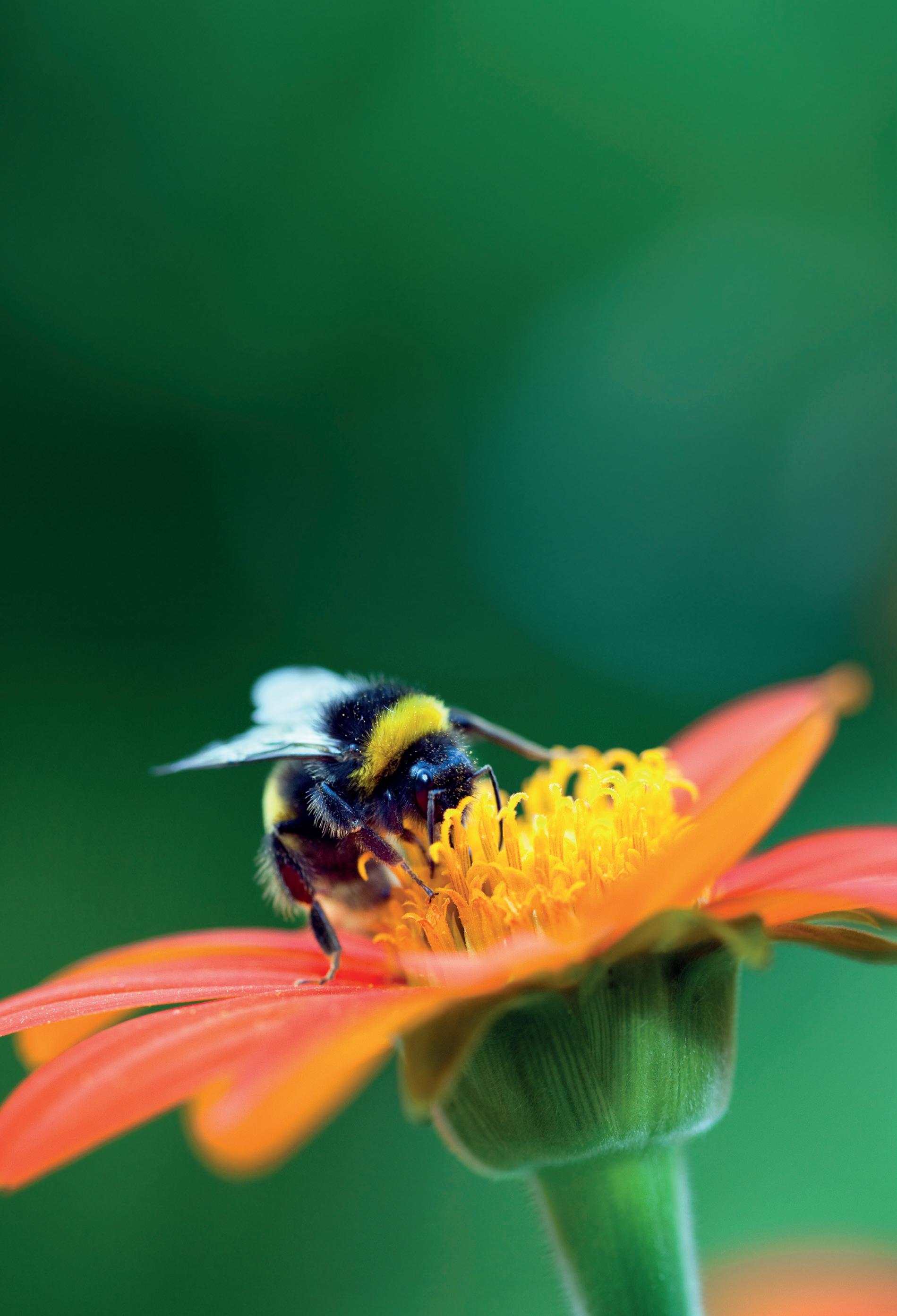
Enter our new Nature Wins Lottery from just £1 a week, and you’ll support our work every time you play. Plus, you’ll be in with the chance of winning a prize of up to £25,000 every week, or one of many runner up cash prizes. A win for you, a win for the planet!




Play now at soilassociation.co/lottery
SCAN ME
JUST £1 TO PLAY!

It’s easy to go overboard when watering your gardens and green spaces during the warmer months, even after a wet August. Here are some top water-saving tips to help you collect and use more naturally sourced water, for healthier plants, soils and water bills!
Luckily, capturing natural water is a simple task. And more frequent stormy weather is set to bring more opportunities for capturing and storing rainwater throughout the year –reducing the need to use mains water.

Water butts are a must, and can be easily attached to downpipes on houses, outbuildings, sheds – or any sizeable surface area with a slope. A decent downpour can easily fill a 150L container, so consider linking more together or having several located near to watering hotspots.
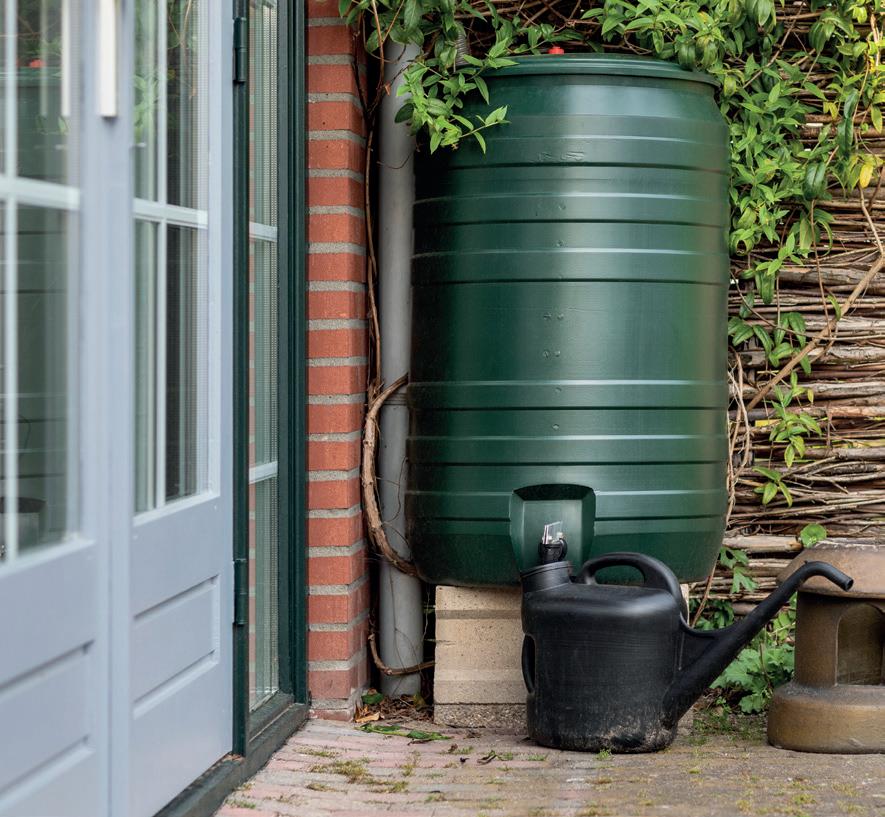
It turns out that using water sparsely not only conserves water but is better for plant health too. Spot watering at the base of plants is much more efficient than spraying large areas.
During the summer, water early or late to prevent the water evaporating in the daytime heat – but be mindful that slugs and snails will also thank you for the evening moisture!
Liquid feeds and watering naturally go hand-in-hand, and rainwater is recommended as it won’t inhibit the good bacteria in your homemade compost teas and comfrey mixtures.
Top tip: Over-feeding is as much an issue as under-feeding, so go easy on the seaweed! In fact, many believe that if you prioritise improving soil health then the reliance on liquid feeding will substantially reduce.
Mulching plays a key role in both retaining moisture in the soil and providing nutrients. Mulch will also introduce plant or animal tissue (known as organic matter) to the soil, enhancing its structure and its capacity to hold water. This means healthy soils with higher levels of organic matter are key to saving and retaining water!
Sally Morgan is back for another ‘notes from the farm’, this time sharing all about her favourite field.
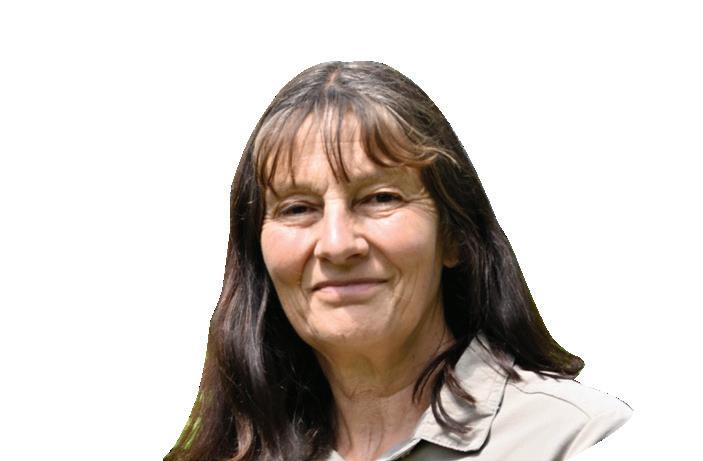
My favourite field
I think most farmers have a favourite field. Mine is one called ‘Park’ and it’s a 7-acre wood pasture with veteran trees.
Wood pasture is an important habitat that’s disappearing across the United Kingdom. As the name suggests, it’s pasture with well-spaced trees, traditionally managed by grazing, with multiple generations of trees and a few shrubs. It creates a mosaic of different habitats in a relatively small space, and therefore attracts a lot of biodiversity.
I was first introduced to this habitat by Oliver Rackham, ecologist, historian and author of The History of the Countryside. He explained that it was an ancient habitat created by woodland being grazed by domesticated animals at least 1,000 years ago.
Oak and beech tended to dominate in wood pastures as their tannin-rich leaves were less palatable to livestock compared with ash or elm. It was
this style of grazing that led to the technique of pollarding, in which trees are cut a couple of metres above ground level, so that the animals could not reach the shoots.
The open nature of wood pasture allows the trees to grow and extend sideways, unrestricted by the presence of other trees, while light is able to reach the trunk and soils beneath the tree, which encourages the growth of other flora and fauna.
When we bought our farm 19 years ago, the trees were surrounded by improved rye grassland that had been sprayed, fertilised and cut early so that the benefit to butterflies and other insects was minimal. My regime has

been one of no input apart from the occasional grazing by sheep and geese and a July hay cut, and as a result, there has been a boom in floral diversity.
First to appear were clovers, vetches, native grasses and so-called weeds, such as buttercup and hogweed, while the bare patches left by moles have created opportunities for cinquefoil and other low growing species. This has boosted the insect diversity, especially butterflies.
My favourite is the marbled white, which is in such abundance now due to the presence of one of its favourite plants, knapweed.
The oaks vary in age, and sadly the oldest, estimated at 250 years, has lost several limbs during recent storms. These have been left on the ground, as

the dead wood creates more habitats and completes the cycle of life.
Looking forward, I need to get the next generation of trees established on the pasture. I have allowed some of the oak seedlings to remain but as climate change increasingly makes itself known, I am not sure local seed will be the best going forward. I may have to investigate sources of Quercus robur, a species in the oak family from further east, which may have genes more suited to dry summers, but that’s something for a future ‘notes from the farm’.
Sally owns a small organic farm in Somerset and is the author of The Climate Change Garden and The Healthy Vegetable Garden. You can follow her on Instagram @the_organic_plot.
Dead wood creates more habitats and completes the cycle of life
Order early, before designs run out.




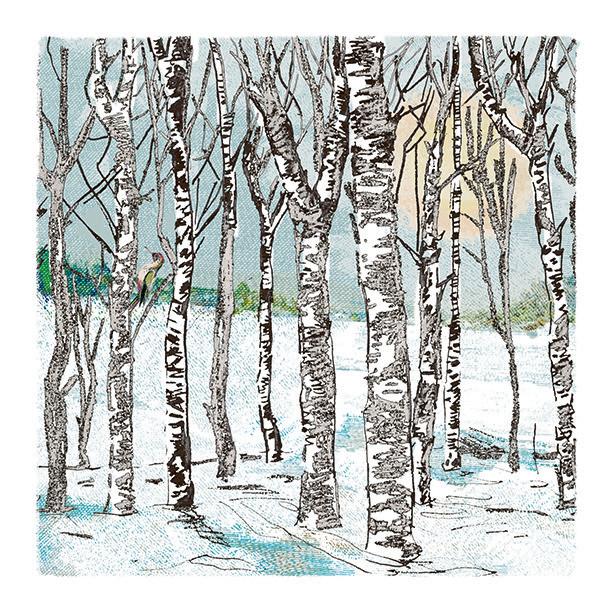
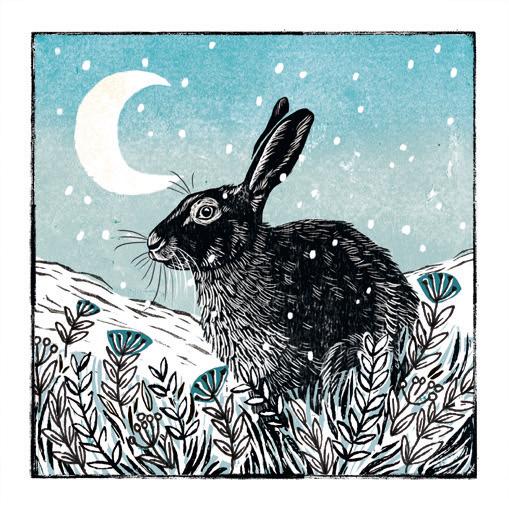




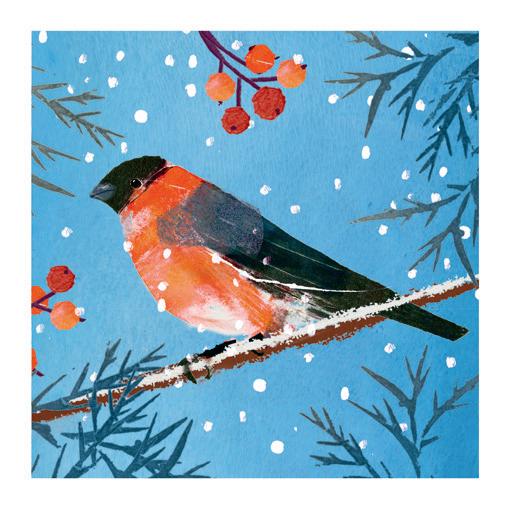

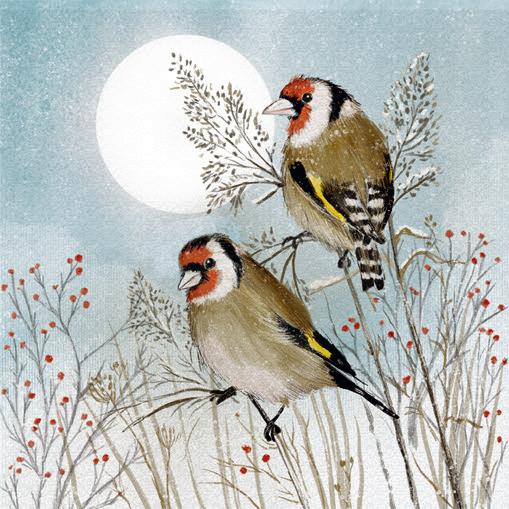





For the last 25 years, Lee Holdstock has dedicated his life to the Soil Association organic standards. Since joining the organisation in 1999, he has played a vital role in the widespread growth of the organic market and is a hugely valued member of the team.
This year, Lee is celebrating his 50th birthday which happens to coincide with the 50th anniversary of the Soil Association organic standards – what a year! Living Earth spoke to him about his time at the Soil Association and why he believes our organic principles are still so important 50 years after their creation.
Can you tell us about yourself and your role at the Soil Association?
Of course, I joined the Soil Association in January 1999 as an Administrator in the Certification side of the business.
At that time, there were around 60 employees working for the charity and 30 in Certification, and, having previously worked in banking, I was struck by how relaxed it was here! The Soil Association has grown significantly since then, as has my role.
I’m now a Senior Business Development Manager, handling pretty much everything related to the organic market – looking after our valued licensees, looking at external factors like Brexit that may impact the success of the market, and representing the Soil Association internationally.
You’ve dedicated a lot of your life to the organic standards, why is organic important to you?
I’m still here 25 years later because of the original sense of purpose I felt when I first joined the organisation. At that time, the Soil Association was the only organisation really talking about the vital link between the soil under your feet and what ends up on your plate.
There are lots of other methods of nature-friendly farming that have come and gone over the years, some very well-meaning with the right values. The challenge is that there’s a lot of anonymity in the food chain, and people are, rightly, becoming less trusting of the food and drink industry. They rely on independent organisations like the Soil Association to give them peace of mind, so that they know that the pounds in their pocket are genuinely contributing to a better future.
It’s been 50 years since the organic standards were created and the work that we do is still really valid. In the last 50 years, the public’s motivations for choosing organic have shifted from taste and quality to sustainability, and people are slowly coming round to our way of thinking. Other methods of farming come and go, but it’s reassuring that we always come back to organic.
When you’re on a farm talking to a farmer, it’s a wonderful reminder of why the standards are important. Whether that’s seeing incredibly healthy animals, or wildlife returning to a farm, it never fails to remind me of my motivation for joining.
But it’s the farmers and business owners that I find truly inspirational – they have so much knowledge about what’s
going on at ground level and how it benefits the wider ecosystem. A few that spring to mind are Tim Meade from Yeo Valley, Guy Watson at Riverford, and the Chadwick brothers from Seasalt Clothing, but there are many more. They are working hard to grow their organic businesses in what can be very difficult circumstances, because they know that it’s the right decision.
Over the last 50 years, the organic standards have been tweaked but the principles are fundamentally the same. The next stage of evolution, I believe, will be bringing the social and community aspects into the standards to show that they can result in really tangible benefits for the community. This might be supporting employees to live their organic values, or requirements for transparency in supply chains.
In the next 50 years, I hope that naturefriendly food and farming becomes the norm and not the outlier, because I really do believe that it is the key to a sustainable future.
And, most importantly, what did you do to celebrate your birthday?
I spent my birthday at Valley Fest, a food and music festival held at Community Farm with a strong focus on sustainability. I was lucky enough to be part of a talk with Tim Meade (Yeo Valley Farm) and Edd Lees (Wildfarmed), But when that was done, I spent the day drinking cider, listening to music and generally enjoying the festivities!
From the Soil Association Team, we’d all like to say a big thank you to Lee for his dedication to organic and wish him a happy 50th birthday!
2022/2023
This is a summary of the Charity’s financial performance taken from the 2022/23 audited statutory accounts of The Soil Association Limited.
Income received by the Charity is classified as either unrestricted or restricted. Unrestricted funds are those that charity trustees may spend as they see fit in the delivery of the Charity’s objectives. Restricted funds are those that must be spent as specified by the donor or grant funder.
Charitable giving from individual supporters through donations, legacies and memberships totalled £2,132k, an increase of over £400k on the prior financial year due to increased corporate support as well as increases in philanthropic donations, legacy and membership income.
Restricted grant funding was £3,310k, up 16% on the prior year, and included grants from Horizon Europe for the AI4SoilHealth and AgroecologyTRANSECT programmes, funding from Scottish Government for the continuation of Food for Life in Scotland, a grant from Samworth Foundation for “Securing policies for mainstream agroecological farming transition” and funding from DEFRA for the Farm Resilience Fund – Scale Up programme.
Income earned from providing contract and consultancy services into the public and private sectors was also higher than the prior year at £1,099k. These revenues are principally associated with our Food for Life work commissioned by local authorities and our Food for Life Served Here scheme used in the catering sector.
Income received from the Charity’s trading subsidiaries, Soil Association Certification Limited and SA Sales and Services Limited, was £741k, which was significantly reduced from £1,619k last year. This was anticipated as Soil Association Certification made an
exceptional level of profit in 2021/22, which was not expected to be repeated.
Expenditure within the Charity was higher than the prior financial year at £9,242k. Planned investments were made to increase the impact of the Charity and future fundraising potential, as well as inflation driving an increase in unrestricted expenditure. Restricted expenditure was comparable to the prior year.
The Charity made an unrestricted deficit of £776k in the year, reducing unrestricted funds at 31st March 2023 to £3,621k. This deficit was the result of planned investment using the surplus generated in 2021/22.
Group ‘free’ unrestricted reserves reduced from £1,754k at the prior year end to £993k at 31st March 2023, which is within the targeted range of free reserves set by Trustees. Our reserves are generated by and held for the benefit of the Soil Association Charity and its trading subsidiaries, most notably Soil Association Certification, an £11m business. ‘Free’ reserves are the amounts readily available to support the Group in the event of unexpected reductions in income or cost increases and to provide a source of funds for planned investment in future years.
The balance of unrestricted reserves of £2,628k represents assets required for ongoing operations, including principally our Head Office building, as well as amounts we must hold as a condition of our mortgage borrowing.
A restricted deficit of £1,171k was made in the year as the Charity continued to deliver work on restricted programmes. The restricted funding balance of £2,400k carried forward at 31st March 2023 comprises grant income that will fund expenditure in future years in accordance with the grant funder’s direction.













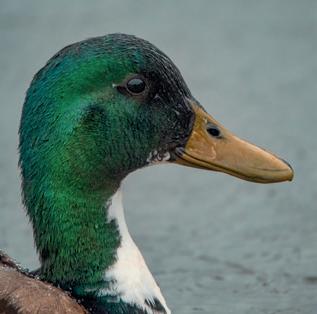
ShareGift is an independent UK registered charity which specialises in releasing money locked up in shareholdings and donating the proceeds to charity.
ShareGift usually works by collecting shares that are either too small to sell or are worth less than the broker commission required to sell them. These shares are transferred to ShareGift and collected until there are enough to sell. The resulting proceeds are donated to a wide range of charities and charitable causes.
Since 1996, ShareGift has helped to generate £45 million in funding for more than 3,500 UK and Irish charities. Donations are made to charitable causes that donors and supporters suggest, including the Soil Association.
So far, ShareGift has made grants totalling £18,500 to the Soil Association. And you can still help support the Soil Association’s work by donating any shareholdings you may have to ShareGift and mentioning that you would like to support us.
Your money will go towards making a positive impact on our future – with health, the environment and wildlife in mind.

To find out more, please visit: soilassociation.co/sharegift
ShareGift is a UK registered charity (No. 1052686). The charity does not take any commission for its role converting shareholdings to monetary donations.
While the core of ShareGift’s work is focussed on small share donations, it also regularly facilitates much larger philanthropic donations
This Book Club recommendation comes from Soil Association CEO, Helen Browning.
Earlier this year, a Soil Association investigation found that the UK Government are promoting ultra-processed foods using the NHS ‘Better Health’ app, despite growing evidence showing the major health risks associated with them.
Ultra-Processed People by Chris van Tulleken looks at the origin of ultra-processed food and how the Government, scientists and doctors have allowed us to become hooked on it.

We’ve entered a new age of eating. For the first time in human history, most of our calories come from ultra-processed foods. The problem is that almost all our staple foods are ultra-processed and for many people it is the only available and affordable food.
The definition of UPFs can be boiled down to this: if it’s wrapped in plastic and has at least one ingredient that you wouldn’t find in your kitchen then it’s a UPF.
In this book, Chris spent a month eating a diet of 80 per cent UPF, typical for many children and adults across the world. He then explains the impact it had on his body and proposes real solutions, whilst not placing the blame on the individual.
Ultra-Processed People will transform the way you look at food and the role policy makers play in our diet and health.
If you’re enjoying our book recommendations, or would like to share any book ideas, please do get in touch! We’re always happy to hear from our readers, so please do share any books you’ve read that have changed the way you think about your food and where it comes from.
Email: memb@soilassociation.org

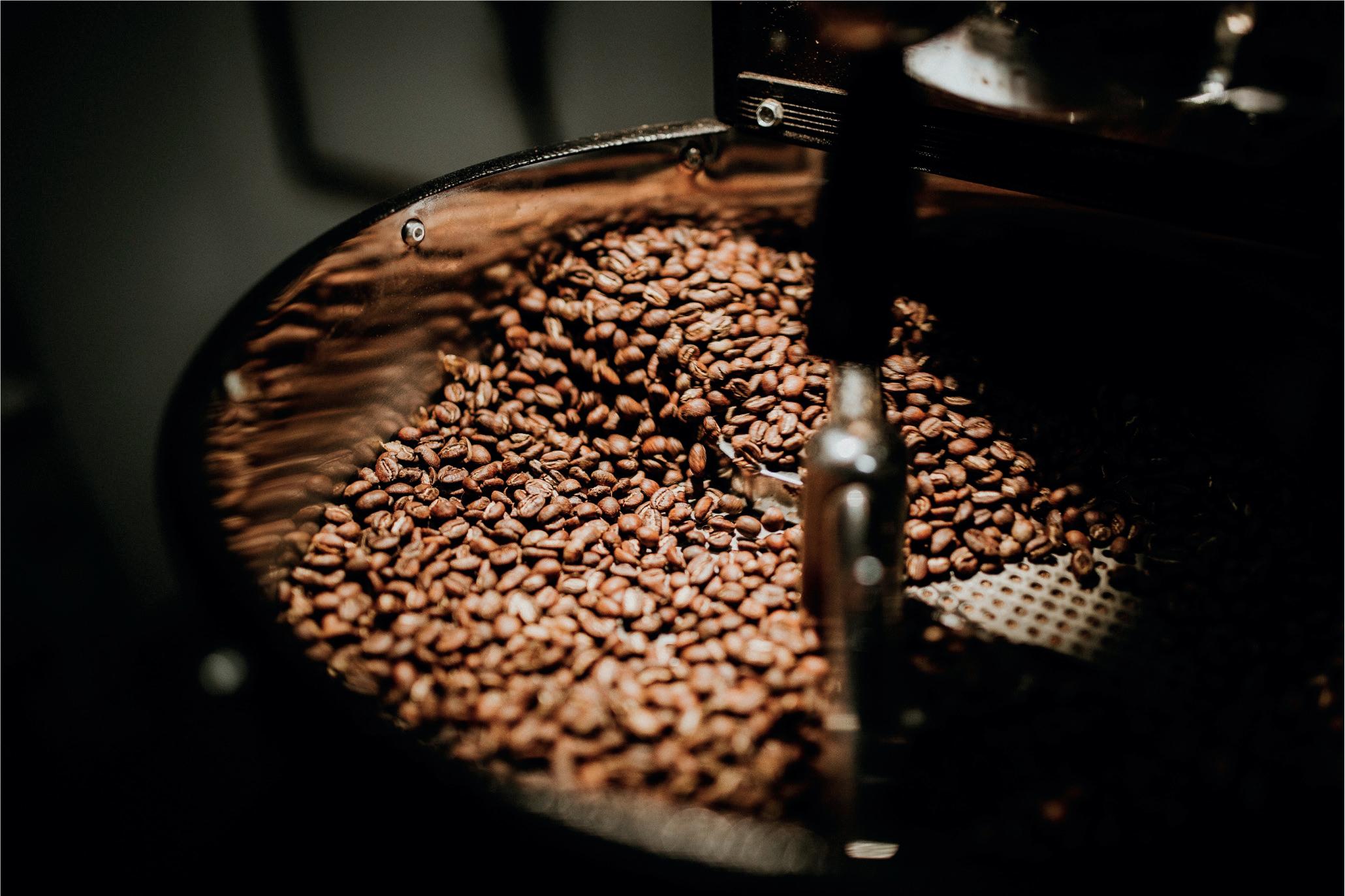

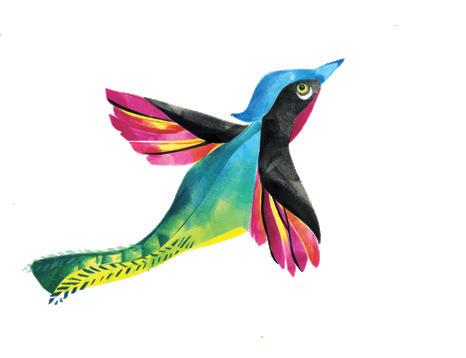







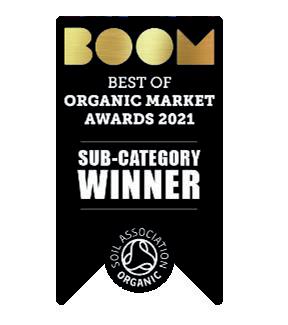
“Anyone can say they care about the environment but actually doing something about it, that’s different.

25 years ago, we built our first windmill and kicked off the green energy movement, and we’ve built quite a few more since then. We use all of our profits to build more.

You can join our mission to end the use of fossil fuels. Don’t just pay an energy bill, pay it to a company that will do some good with it – and invest in all of our futures.”
 Dale Vince Ecotricity Founder
Dale Vince Ecotricity Founder
